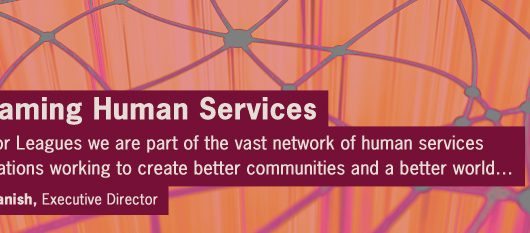The fight against human trafficking has become one that a number of SPACs have adopted as their own. Here, the Junior League of the City of New York’s Lisa Hofflich describes how the New York State Public Affairs Committee got into the game early—and became a player in the action in Albany.
When did NYSPAC get involved in fighting against human trafficking in New York?
We’ve been involved at the state level since 2006, when we strongly urged members of the New York State Assembly and Senate to enact a strong, comprehensive state law that recognizes human trafficking as a crime, punishes traffickers and establishes services for victims. The legislation was signed into law in May 2007. The following year, we successfully advocated for the provision of funding for domestic violence shelter services for victims of human trafficking and domestic violence, which became law in September 2008.
NYSPAC was an early mover on this issue. What motivated your member Leagues to move so decisively?
We believe it’s an important issue for all New Yorkers, whether you are from the New York City area—obviously a destination for human trafficking operators because of its size and economy—or any of our other member Leagues, which are all located on major interstates and transportation portals across New York. What working as a SPAC allows us to do is to leverage the power of association and the individual voices of our more than 7,500 members statewide.
What happens when you get early success on an issue like this?
With NYSPAC and our 17 member Leagues, success generated more and deeper activity. In the 2012-2013 and 2013-2014 legislative sessions, we joined the New York State Anti-Trafficking Coalition to advocate for the passage of the Trafficking Victims Protection and Justice Act (TVPJA). The TVPJA addresses child sexual abuse and exploitation, including forcing minors into prostitution, in a comprehensive way by enhancing protection for trafficking victims. It increases accountability for buyers and traffickers who are fueling the growth of this massive underground industry and helps prevent re-victimization of trafficking victims in the justice system. The bill also looks to close any gaps and loopholes from the 2007 NYS Human Trafficking law and the 2008 Safe Harbor Law that deal with how prostituted minor children are treated in the justice system.
In 2012, on behalf of NYSPAC, I was part of a NYS Assembly roundtable discussion with other nonprofits, service providers, and government agencies discussing the state’s approach to trafficking victims. Thanks to a collective Junior League experience of working with domestic violence shelters, I was able to point out that among the issues that were not being adequately addressed by the state was the shortage of emergency shelter beds that are available to trafficking victims to help get them off the streets and into safety.
Last year, in what was a tumultuous legislative session that involved heated debate around women’s rights, my co-chair, Denise Murphy McGraw, and I met with senior officials from the governor’s office to discuss where human trafficking fell in the midst of all the back-and-forth politicking around the Women’s Equality Act.
During that same period, we launched our successful #peoplearenotforsale social media campaign to support the TVPJA and to raise awareness of trafficking in New York State. We took photos of over 100 legislators with a sign reading “People are not for sale. End human trafficking now.” The message went on to be used by various outside groups to urge the passing of the bill. Thanks to our efforts, we were directly responsible for the signing on of 47 additional bill co-sponsors demonstrating bipartisan support for the bill.

